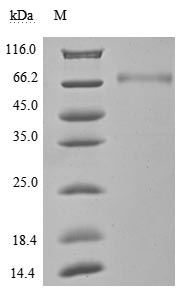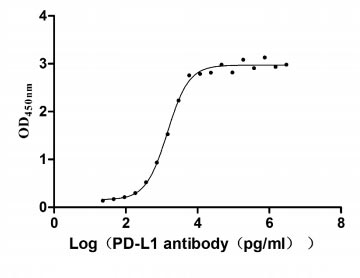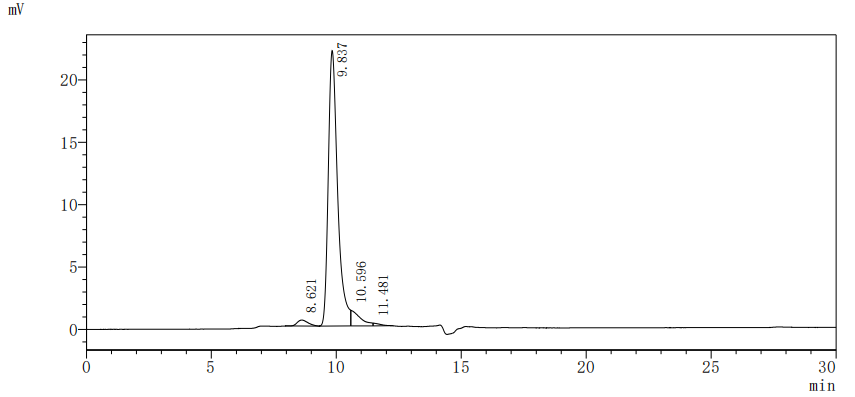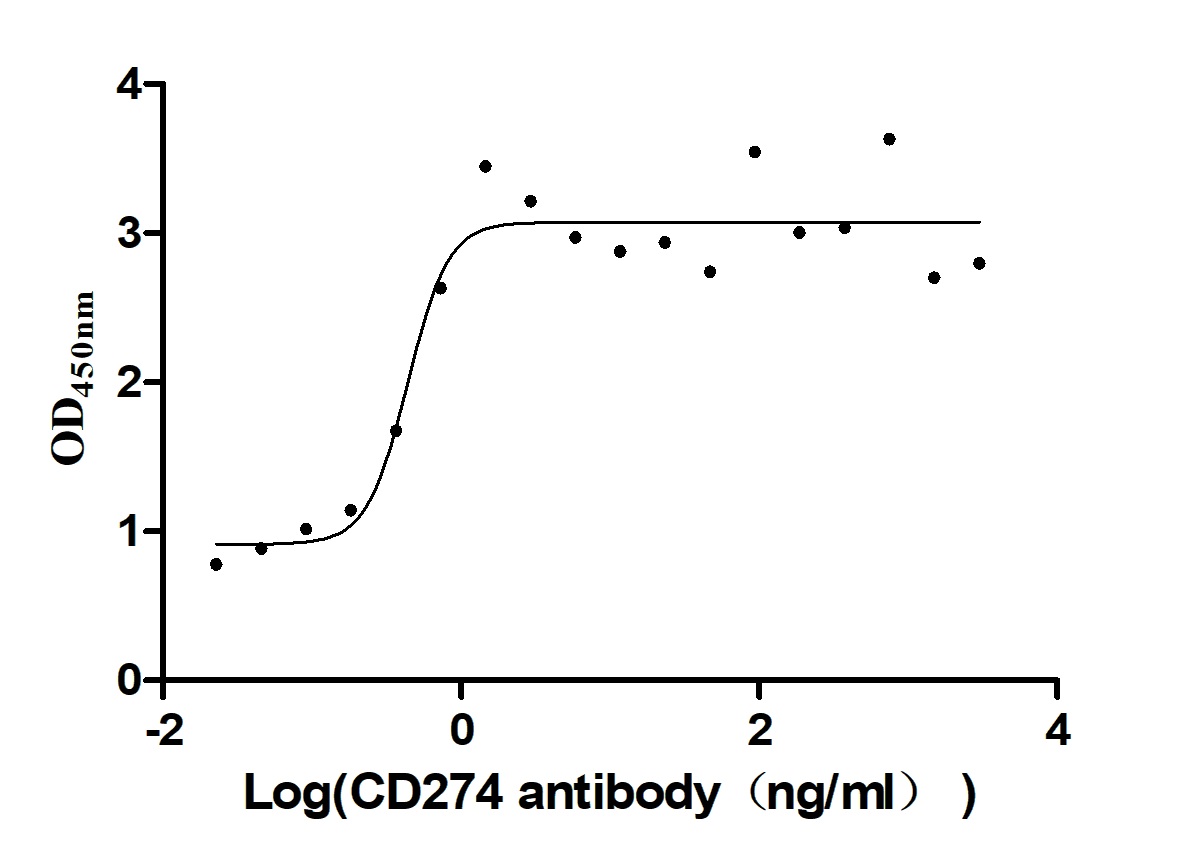The Human Programmed cell death 1 ligand 1 (CD274) is a protein that participates in the adaptative immune response and the cell surface receptor pathway. This protein is the ligand for the inhibitory receptor PDCD1/PD-1 that regulates the activity of T-cells and limits their response. This recombinant protein is prepared by the expression of the 19-238aa region of the human CD274 in mammalian cells.It was fused on the C-terminus with a TEV linker and an immunoglobulin Fc domain tag for purification and immobilization purposes. The expressed protein has a molecular weight of 52.7 kDa. This product has a purity higher than 95%, as measured by SDS-PAGE. Its EC50 for the binding with human PD-L1 protein determined by a functional ELISA is 1.252-1.653 ng/mL. The final product has low levels of endotoxin as determined by LAL method. This recombinant protein could be used in cancer research as its increased expression in tumors promotes immune evasion and tumor cell growth by suppressing T-cell activity.Therefore, it becomes a target for the anti-PD-L1 pathway immunomodulation cancer therapy.







